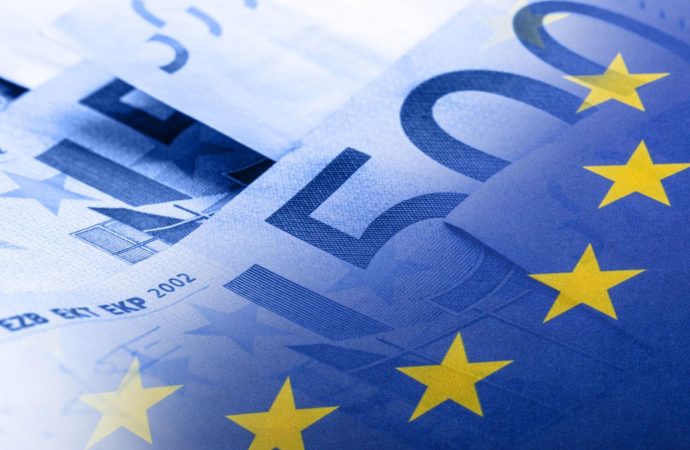The financial world has undergone a tremendous transformation over the past few decades, and one of the most significant changes is the way we make payments. Payment technologies have evolved from cash and checks to cards and, more recently, to digital solutions that have transformed the way businesses and individuals conduct transactions. This article will
The financial world has undergone a tremendous transformation over the past few decades, and one of the most significant changes is the way we make payments. Payment technologies have evolved from cash and checks to cards and, more recently, to digital solutions that have transformed the way businesses and individuals conduct transactions. This article will explore the evolution of payment technologies, examine what’s new in this space, and provide an analysis of the major trends shaping the future of payments.
The Early Days: Cash and Checks
For centuries, cash was the primary method of payment. Coins and paper currency facilitated trade and commerce worldwide, and for a long time, there wasn’t much in the way of innovation. Eventually, checks came along, providing a more convenient way to transfer large sums of money without the need to carry cash.
While these traditional payment methods are still in use today, their limitations have led to the development of newer technologies that offer greater convenience and security. The rise of these technologies can be traced back to the mid-20th century, marking the beginning of a new era in financial transactions.

Image by: https://beyond seller.com
The Advent of Credit and Debit Cards
In the 1950s, payment technologies took a significant leap forward with the introduction of credit cards. These cards allowed users to make purchases without cash, with the understanding that they would pay the amount back at a later date. Debit cards soon followed, providing a way to directly withdraw funds from a user’s bank account to pay for goods and services.
Credit and debit cards revolutionized the way people pay, offering convenience, security, and the ability to manage finances more effectively. These payment methods became even more popular with the development of ATMs and electronic banking, which allowed users to withdraw and deposit money outside of traditional banking hours.
The Rise of Online Payments
With the advent of the internet in the 1990s, online payments became possible, giving birth to e-commerce. Companies like PayPal led the charge by offering a secure platform for individuals to make and receive payments online. This marked a major shift in payment technologies, as consumers could now shop from the comfort of their homes without the need for physical money or cards.
Online payment technologies opened the door to a global marketplace, allowing consumers to buy products from around the world and businesses to expand their reach. This shift also increased the need for secure online payment gateways, which continue to evolve to this day.
Mobile Payments: A New Era of Convenience
The introduction of smartphones added another layer of innovation to payment technologies. Mobile payments have emerged as one of the fastest-growing payment methods in the world. Solutions like Apple Pay, Google Pay, and Samsung Pay allow users to make payments directly from their phones with just a tap or a scan. These technologies utilize Near Field Communication (NFC) to enable contactless payments, adding a new level of convenience for consumers.
Mobile wallets are now widely accepted at retail stores, online marketplaces, and even peer-to-peer transactions. The integration of biometric authentication, such as fingerprint scanning or facial recognition, has also enhanced the security of mobile payments, making them a trusted method for consumers.
Cryptocurrencies: The Next Frontier
Cryptocurrencies, like Bitcoin and Ethereum, have introduced a decentralized form of digital currency that operates independently of central banks. Blockchain technology, which powers cryptocurrencies, offers a secure and transparent way to conduct transactions without intermediaries. While still in its early stages of adoption, cryptocurrencies are already making waves in the world of payment technologies.
The potential for cryptocurrency payments is vast, particularly in cross-border transactions, where traditional methods can be slow and costly. However, challenges such as volatility, regulatory concerns, and scalability must be addressed before cryptocurrencies can become mainstream in everyday transactions.
Contactless Payments: Speed and Security
One of the most notable developments in recent years has been the rise of contactless payments. Using NFC technology, contactless cards allow users to pay for items by simply tapping their card on a reader, eliminating the need to swipe or insert their card into a terminal. This method has become particularly popular due to its speed and convenience, especially in retail environments.
During the COVID-19 pandemic, contactless payments saw a significant increase in adoption as consumers looked for safer ways to pay. The contactless limit was increased in many regions to accommodate higher-value transactions, further boosting its popularity.
Buy Now, Pay Later (BNPL) Services
Another trend reshaping the payment landscape is the rise of Buy Now, Pay Later (BNPL) services. Companies like Klarna, Afterpay, and Affirm allow consumers to purchase products and pay for them in installments without the need for a traditional credit card. These services have gained popularity, particularly among younger consumers who prefer flexible payment options.
BNPL services offer transparency and convenience, often without interest or hidden fees, making them an attractive alternative to credit cards. However, critics have raised concerns about the potential for consumers to accumulate debt without fully understanding the financial implications.
The Role of Artificial Intelligence (AI) in Payment Technologies
Artificial intelligence (AI) is also playing a growing role in payment technologies. AI-powered fraud detection systems are becoming more sophisticated, helping banks and payment processors identify suspicious activities and prevent fraud in real time. AI is also being used to personalize payment experiences, offering consumers tailored recommendations based on their spending habits.
Additionally, AI-driven chatbots are improving customer service in payment platforms, providing users with instant responses to queries and resolving payment-related issues more efficiently.
The Future of Payment Technologies
The evolution of payment technologies is far from over. As technology continues to advance, we can expect even more innovations that will change the way we make and receive payments. Here are a few trends that are likely to shape the future of payment technologies:
- Biometric Payments: While biometric authentication is already used in mobile payments, future developments could lead to full-scale biometric payments. Consumers might be able to authorize payments using fingerprint scanning, facial recognition, or even voice authentication.
- Voice-Activated Payments: With the rise of voice assistants like Amazon Alexa and Google Assistant, voice-activated payments could become a convenient way for users to make transactions without needing to interact with a screen or device.
- Quantum Computing: Quantum computing could revolutionize encryption methods, making payment technologies even more secure. Quantum-powered systems could process transactions faster and with greater security than current methods allow.
Analysis Table: Key Innovations in Payment Technologies
| Era | Payment Technology | Impact |
|---|---|---|
| Early Days (Pre-20th Century) | Cash and Checks | Physical and manual transactions |
| 1950s | Credit and Debit Cards | Convenience and security in retail and ATM transactions |
| 1990s | Online Payments (e.g., PayPal) | Enabled global e-commerce and secure online transactions |
| 2010s | Mobile Payments (Apple Pay, Google Pay) | Contactless, on-the-go payments through smartphones |
| 2010s | Cryptocurrencies | Decentralized, blockchain-based payments |
| 2020s | Contactless Payments (NFC) | Fast, touchless transactions, especially during COVID-19 |
| 2020s | Buy Now, Pay Later (BNPL) Services | Flexibility in payments without traditional credit cards |
| Ongoing | AI in Payment Security | Real-time fraud detection and personalized payment experiences |
Comparative Table: Traditional vs. Emerging Payment Technologies
| Aspect | Traditional Payment Technologies | Emerging Payment Technologies |
|---|---|---|
| Speed | Slower (cash, checks) | Fast (mobile payments, contactless, cryptocurrencies) |
| Security | Varies (cash is less secure) | High (AI, blockchain, biometric security) |
| Accessibility | Dependent on physical presence | Global and online accessibility (cryptocurrency, mobile wallets) |
| Flexibility | Limited (must have physical or credit cards) | More flexible (BNPL, mobile payments, contactless) |
| Cost | Potentially high (cross-border payments) | Lower costs (cryptocurrency, P2P mobile transactions) |
| Regulation | Well-established | Emerging, with ongoing regulatory concerns |
| Consumer Adoption | High (especially with credit cards) | Growing, especially with mobile and contactless payments |
Conclusion
The evolution of payment technologies has been nothing short of remarkable. From the early days of cash and checks to the advent of mobile payments and cryptocurrencies, we have seen rapid innovations that have transformed the way we conduct transactions. The future holds even more exciting possibilities, as AI, biometric systems, and quantum computing push the boundaries of what’s possible in the world of payments. As these technologies continue to develop, they will play an increasingly important role in shaping the global economy.
















